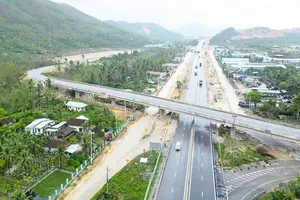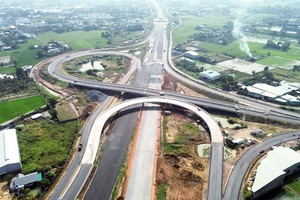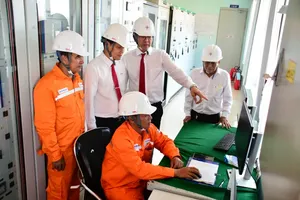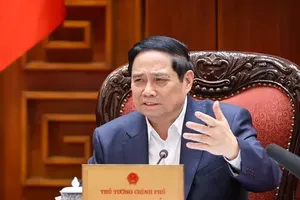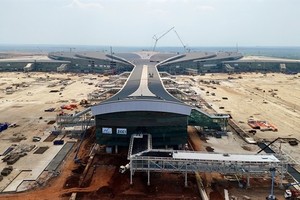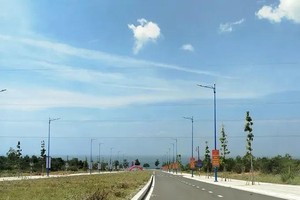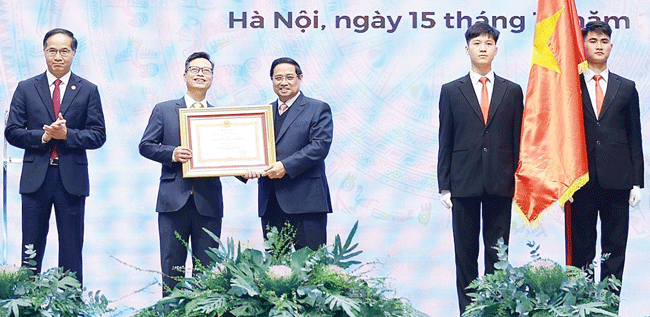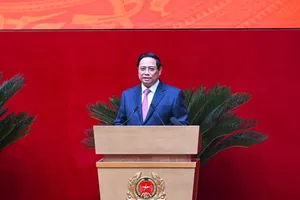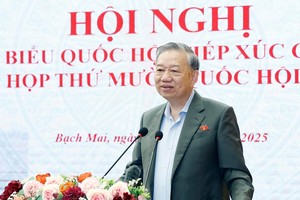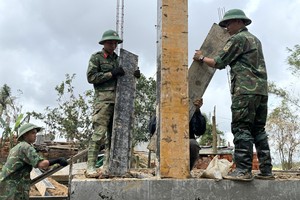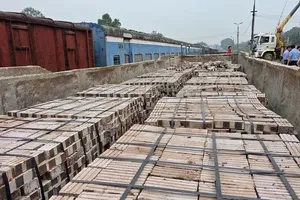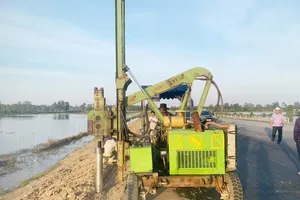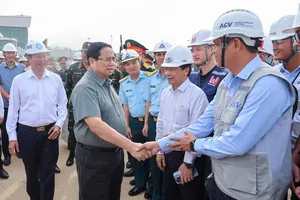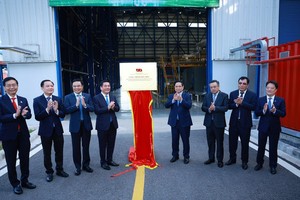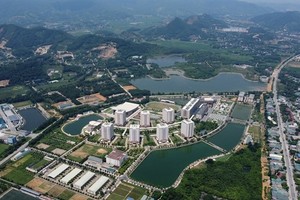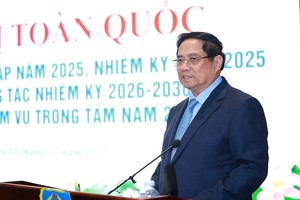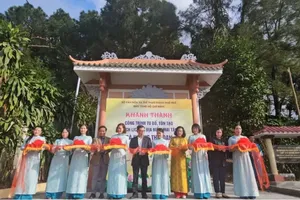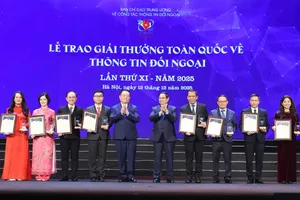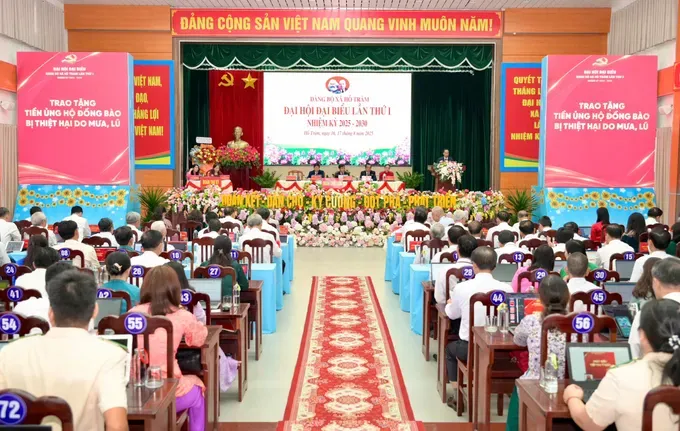
This ambitious goal will be pursued through a focus on green growth, innovation, and digital transformation. This initiative positions Ho Tram as a key driver of economic development for the wider Xuyen Moc region.
This strategic orientation was outlined during the first Commune Party Congress of Delegates for the 2025–2030 term, which was attended by Mr. Nguyen Phuoc Loc, Deputy Secretary of the Ho Chi Minh City Party Committee and Chairman of the Vietnam Fatherland Front Committee of Ho Chi Minh City.
Accordingly, to achieve the goal of becoming an international-class seaside tourism center, Ho Tram Commune of Ho Chi Minh City must be positioned within the overall Xuyen Moc region, with Ho Tram serving as the driving force to focus on economic development through green growth, innovation, and digital transformation across all sectors.
Promoting balanced development between rural and urban areas
From July 1, Ho Tram Commune was established through the merger of Phuoc Buu Town, Phuoc Thuan Commune, and Phuoc Tan Commune (formerly under Xuyen Moc District, Ba Ria–Vung Tau Province).
The commune currently has 36 major projects approved with a total investment of about US$7.3 billion. It is also seeking investment for 5 projects covering 180 hectares, with a total capital of around $3 billion.
The Ho Tram brand has gained recognition among many investors and tourists, both domestic and international. For the 2025–2030 term, the Ho Tram Commune Party Committee aims to foster rapid and sustainable development, transforming the commune into an international-class seaside tourism center — a green, smart destination that harmonizes conservation with growth.
In his directive remarks, Deputy Secretary Nguyen Phuoc Loc emphasized that to achieve the goal of becoming an international-class seaside tourism center, Ho Tram Commune must be positioned within the overall Xuyen Moc region, serving as a key driver for economic growth through green development, innovation, and digital transformation across all sectors.
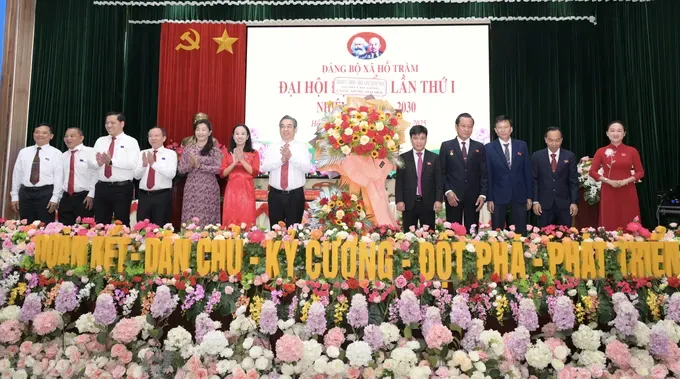
Accordingly, the commune must make greater efforts to strengthen regional linkages within Xuyen Moc, integrating socio-economic development with neighboring communes such as Xuyen Moc, Binh Chau, Hoa Hoi, Hoa Hiep, and Bau Lam while carrying out political tasks under the principle of 'preserving forests, protecting rivers and lakes, and embracing the sea.' At the same time, it is essential to fully grasp the advantages, characteristics, and specific features of each area and locality in order to propose well-grounded plans for urban–rural development.
Deputy Secretary Nguyen Phuoc Loc suggested that the commune must clearly define its coastal areas, supporting zones, functional areas, development corridors, and agricultural tourism zones, as well as the distinct features of its forests, in order to prepare documentation for carbon certification and implement greenhouse gas reduction measures across all sectors.
He emphasized that in clearly defining these 'six areas,' the commune must also promote urban green development, ensure balanced growth between rural and urban areas, and establish criteria under the concept of 'villages within the city, the city within villages.' The goal is to build an advanced model of new rural development that highlights Ho Tram’s unique identity, while linking it to eco-urban development and surrounding satellite towns.
He instructed that the socio-economic development space must be planned in a coordinated manner, ensuring that Ho Tram’s growth is not confined to its administrative boundaries or driven by local interests alone, which could fragment and diminish the shared resources and advantages of the wider Xuyen Moc region.
Therefore, the commune must closely integrate with the economic hubs of Ho Chi Minh City and the southern seaport economic region, connected via the Long Thanh – Xuyen Moc Expressway, in order to become a regional development driver.
Based on the above analysis, Deputy Secretary Nguyen Phuoc Loc assessed that Ho Tram Commune is promoting sustainable development, aiming for international-class tourism standards as a bold and breakthrough proposal by the commune.
Comprehensive human development linked with environmental protection
Alongside economic development, Deputy Secretary Nguyen Phuoc Loc emphasized that the Party Committee of Ho Tram Commune must steadfastly pursue the goal of comprehensive human development linked with environmental protection. This requires closely combining economic growth with the promotion of social progress and equity, turning Ho Tram and the Xuyen Moc region into desirable places to live.
In particular, development should ensure that every resident has access to healthcare, education and training, a safe living environment, and that no one is left behind in the process of progress.
In addition, the commune needs to focus on investing in, preserving, and promoting the values of key cultural works, historical sites, and institutions with political, cultural, and historical significance. This should include developing a network of ‘cultural spaces, forest spaces, and marine spaces’ while establishing a Ho Chi Minh cultural space characteristic of the Xuyen Moc region.
He also called on Ho Tram Commune to build a genuine and responsive local government that aligns closely with the conditions and aspirations of the people, operating in accordance with the principles that are thinking truthfully, speaking truthfully, acting truthfully, achieving real effectiveness, and ensuring that residents truly benefit. Moreover, he requested to clearly define people, tasks, authority, responsibility, timelines, and clarify the results and outcomes achieved.
At the congress, delegates contributed VND30 million (US$1,140) to support people in the Northern Midlands and mountainous provinces affected by rain and floods.
The congress also announced the decision to appoint the leadership of the Ho Tram Commune Party Committee for the 2025–2030 term, consisting of 33 members. Mr. Phan Khac Duy was appointed as Secretary of the Commune Party Committee.
